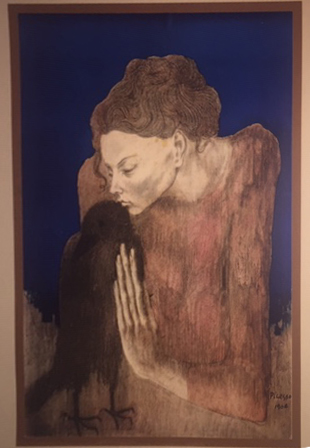I own a household of ‘orphan’ works of art untracible to an artist. I judged them to be very fine pieces. This checklist gives you six steps to understand the quality of a work of art. You may find this checklist helpful if you haunt the thrifts, or go to galleries, and like to purchase artworks.
-
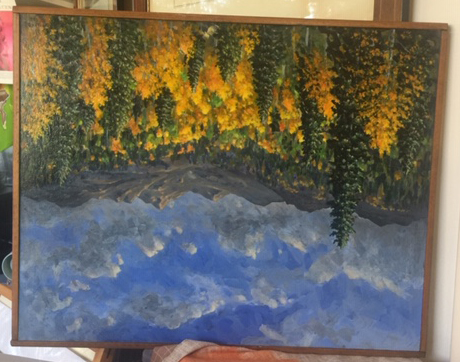 Flip a work of art 180 degrees. Turn it on its head. Set it down that way, and back away. See if a work’s composition HOLDS UP in this reverse situation. If you’re looking at a representational work, squint your eyes so you envision JUST the forms and masses in a work. Look for those masses or forms, the anchors of a the work. See if they relate to each other with INTEREST.
Flip a work of art 180 degrees. Turn it on its head. Set it down that way, and back away. See if a work’s composition HOLDS UP in this reverse situation. If you’re looking at a representational work, squint your eyes so you envision JUST the forms and masses in a work. Look for those masses or forms, the anchors of a the work. See if they relate to each other with INTEREST. - The abiding ‘law’ in art: A GOOD work of art, whether a film, a painting, a poem, a
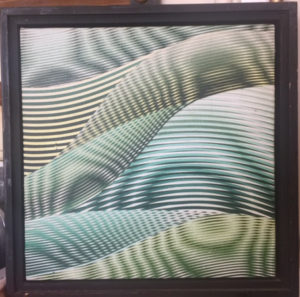 novel, should contain all the elements needed to deliver a feeling, a revelation, a message, whatever the aim of the work. It should contain NOTHING extraneous. Which means that if you flip a painting upside-down, look at JUST the forms, you should ‘read’ the forms as a complete whole. Look for the forms in a composition that do NOT hold together all that well. Look for forms, not just representations of THINGS, that either relate to each other, or do NOT. You want to discover FORMS not look-alikes objects that do NOT make sense by showing us a unrelated structure for no reason. The exception to this rule is when you discover a work that SAYS “disjointed,” and does “disjointed” well for a GREAT reason. Picasso’s Guernica serves as a PRIME example of this exception.
novel, should contain all the elements needed to deliver a feeling, a revelation, a message, whatever the aim of the work. It should contain NOTHING extraneous. Which means that if you flip a painting upside-down, look at JUST the forms, you should ‘read’ the forms as a complete whole. Look for the forms in a composition that do NOT hold together all that well. Look for forms, not just representations of THINGS, that either relate to each other, or do NOT. You want to discover FORMS not look-alikes objects that do NOT make sense by showing us a unrelated structure for no reason. The exception to this rule is when you discover a work that SAYS “disjointed,” and does “disjointed” well for a GREAT reason. Picasso’s Guernica serves as a PRIME example of this exception. - Determine if a work of art possesses artistic integrity: TAKE ONE ELEMENT OUT. Carry a 3 x 5 card and block out one area. For example a highlighted element, something very light colored, or something central to the structure, or something very dark in the piece. If the piece falls apart like a badly constructed bridge, think “GOOD.” This means the ‘eye’s anchor’ in the piece is totally necessary, and not painted for the sake of the story. An example is a GOOD portrait of an entire family: one member of the family, if removed, should cause the whole ‘knitted together’ composition to fall apart. A great example is John Singleton Copley’s The Copley Family.

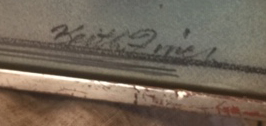 The fourth ‘test’ of artistic integrity of a painting seems rather simplistic. Look at a good painting: The signature ‘sits’ on a compositional element in the painting. It sits on a nature ‘resting’ area. This is a GOOD sign. First the artist thought about the composition when they signed the work. That shows some talent and forethought. Second most good painters have very interesting signatures. You may not be able to read them, but they don’t jump; they’re artistic, and they are painted in a color that harmonizes somehow, or for a good reason, does NOT harmonize. Many collectors can tell the DATE of a work by the handwriting and placement of the artist’s signature. A good painter will work on their signature throughout their career, and will place it intelligently. An amateur signature looks amateur.
The fourth ‘test’ of artistic integrity of a painting seems rather simplistic. Look at a good painting: The signature ‘sits’ on a compositional element in the painting. It sits on a nature ‘resting’ area. This is a GOOD sign. First the artist thought about the composition when they signed the work. That shows some talent and forethought. Second most good painters have very interesting signatures. You may not be able to read them, but they don’t jump; they’re artistic, and they are painted in a color that harmonizes somehow, or for a good reason, does NOT harmonize. Many collectors can tell the DATE of a work by the handwriting and placement of the artist’s signature. A good painter will work on their signature throughout their career, and will place it intelligently. An amateur signature looks amateur.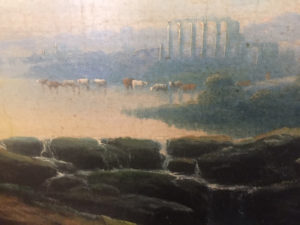 The fourth indication of a good painting is that the brushstrokes flow evenly and the colors aren’t muddied. A great artist friend, also a great teacher, tells his students, “The important moment is to know when to STOP painting a particular canvas. Know WHEN to stop. Because if you DON’T know when to stop, you run the risk of producing the big potato in the sky.” He means overwork can produce muddy colors with certain media. Overwork shows in brushstrokes because they lose a certain freedom of movement.
The fourth indication of a good painting is that the brushstrokes flow evenly and the colors aren’t muddied. A great artist friend, also a great teacher, tells his students, “The important moment is to know when to STOP painting a particular canvas. Know WHEN to stop. Because if you DON’T know when to stop, you run the risk of producing the big potato in the sky.” He means overwork can produce muddy colors with certain media. Overwork shows in brushstrokes because they lose a certain freedom of movement.- Finally, look for the one element that makes you stay with a painting longer than five seconds. If your eye stays in the painting, ask, ‘what draws me IN?” This one element should relate to the other elements in the composition so your eye moves, or is directed through, the entire work. This ONE feature, you keep interested and your eye moves, remains common to ALL great works of art.
